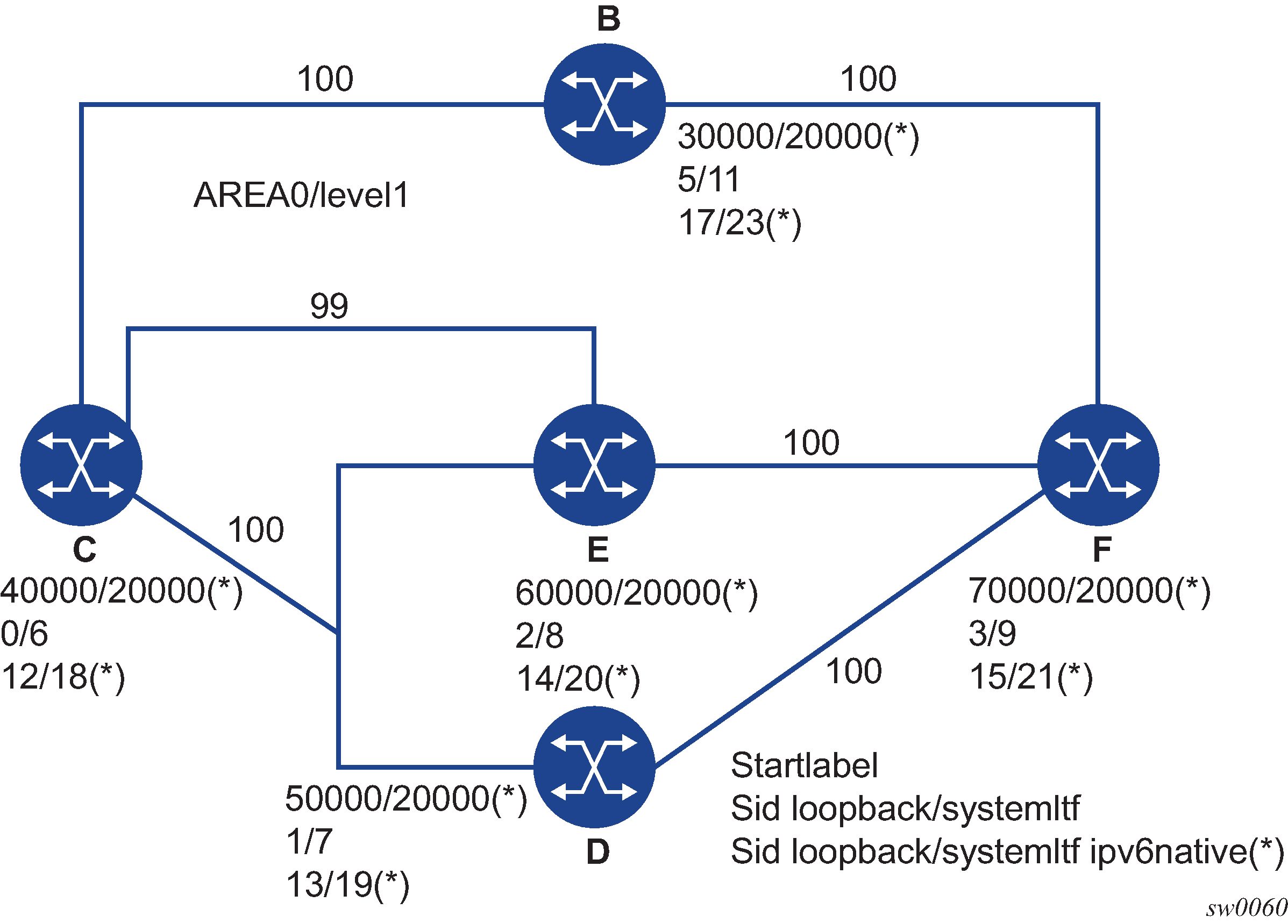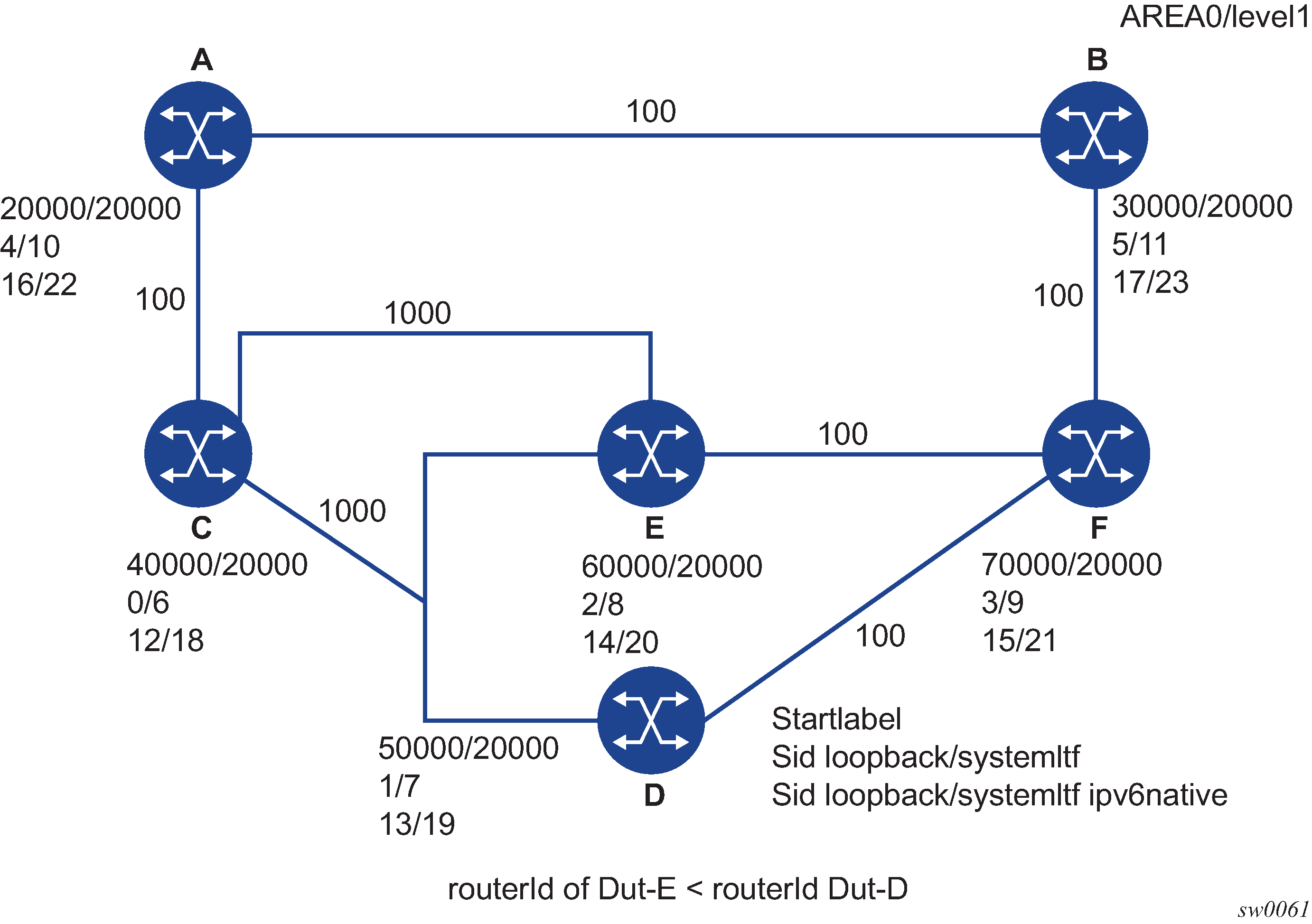The following are feature interactions and limitations of the TI-LFA link protection.
Enabling the ti-lfa option in an IS-IS or OSPF instance overrides the user configuration of the loopfree-alternate-exclude command under the interface’s context in that IGP instance. In other words, the TI-LFA SPF uses that interface as a backup next-hop if it matches the post-convergence next-hop.
Any prefix excluded from LFA protection using the loopfree-alternates exclude prefix-policy prefix-policy command under the IGP instance context is also excluded from TI-LFA.
Since the post-convergence SPF does not use paths transiting on a node in IS-IS overload, the TI-LFA backup path automatically does not transit on the a node.
IES interfaces are skipped in TI-LFA computation since they do not support Segment Routing with MPLS encapsulation. If the only found TI-LFA backup next-hop matches an IES interface, IGP treats this as if there were no TI-LFA backup paths and falls back to using either a remote LFA or regular LFA backup path as per the selection rules in LFA Protection Option Applicability.
The TI-LFA feature provides link-protection only. Thus, if the protected link is a broadcast interface, the TI-LFA algorithm only guarantees protection of that link and not of the Pseudo-Node (PN) corresponding to that shared subnet. In other words, if the PN is in the post-convergence path, the TI-LFA backup path may still traverse again the PN. For example, node E in Figure 1 computes a TI-LFA backup path to destination D via E-C-PN-D because it is the post-convergence path when excluding link E-PN from the topology. This TI-LFA backup does not protect against the failure of the PN.

When the computing router selects an adjacency SID among a set of parallel adjacencies between the P and Q nodes, the selection rules instep 4 of TI-LFA Algorithmare used. However, these rules may not yield the same interface the P node itself would have selected in its post-convergence SPF since the latter is based on the lowest value of the locally managed interface index.
For example, node A in Figure 2 computes the link-protect TI-LFA backup path for destination node E as path A-C-E, where C is the P node and E is the Q node and destination. C has a pair of adjacency SIDs with the same metric to E. Node A selects the adjacency over the P2P link C-E because it has the lowest SID value but node C may select the interface C-PN in its post-convergence path calculation if that interface has a lower interface index than P2P link C-E.
Figure 2. Parallel Adjacencies between P and Q Nodes
When a node SID is advertised by multiple routers (anycast SID), the TI-LFA algorithm on a router which resolves the prefix of this SID computes the backup next-hop toward a single node owner of the prefix based on the rules for prefix and SID ECMP next-hop selection.